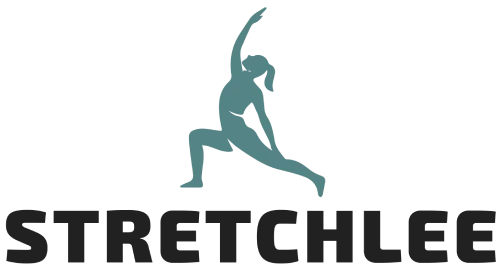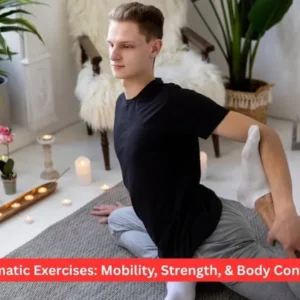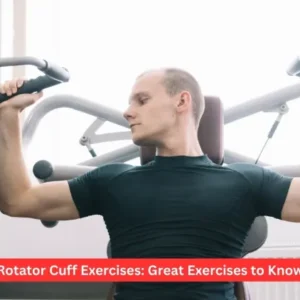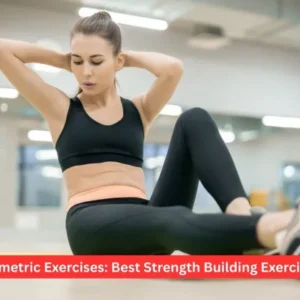The back squat is among the strongest compound exercises for developing general strength, improving posture, and enhancing an athlete’s performance. It addresses large areas of the muscles, including the quadriceps and glutes/hamstrings, and the core. Once one learns to use correct form and knows the variations, one should be able to get incredible outcomes of strength, muscle definition, and mobility. To build a strong, well-rounded, and enduring body, the back squat is an essential exercise for achieving muscle, fat, or fitness objectives.
- What Is a Back Squat?
- Muscles Engaged in Back Squat
- How to do the back squat right
- Benefits of Back Squats
- Common Mistakes to Avoid
- What is the frequency of the Back Squat?
- Do Squats Burn Fat and Change Body Shape?
- Back Squat Warnings and Cautions
- Variations and Alternatives
- Conclusion
- Frequently Asked Questions
What Is a Back Squat?
The back squat is an essential exercise in the lower body, and it involves positioning a loaded barbell on the upper back (on the trapezius muscles) and squatting down and standing up again. It is believed to be among the top three basic moves in strength training, with the other two being the deadlift and the bench press.
Whereas a normal squat using the body weight can be mainly concerned with the form and endurance, that is not the case with the back squat, which is more concerned with the strength and hypertrophy of muscle since heavier loads can be used. The external load is your body weight in a regular squat, and additional load in the form of external load in the back squat makes the workout more intense, resulting in more muscle and strength building.
The major variation between squats and back squats is the location of the weight. The fact that the barbell will be on the upper back positions moves the centre of gravity towards a higher level as a whole, and it demands an increase in stability and core involvement as opposed to a standard squat.

Muscles Engaged in Back Squat
The back squat exercises almost all the major muscles in the lower body, with involvement of the core and stabilisers.
The major muscles to be targeted are:
- Quadriceps: These are the muscles which extend the knee and regulate descent.
- Gluteus Maximus: Contracts when one extends the hips and gives strength to stand up.
- Hamstrings: Assists in stabilisation of the knee and also aids in hip mobility.
- Adductors: Maintain the Knees and do not allow them to fold into each other.
- Core Muscles: Helps to hold back and give support to the spine.
- Calves: Help to make sure the movement is stable and balanced.
The back squat has been described as the best form of squat position due to full-body engagement, which makes this squat amenable to strength formation and the growth of muscles in general.
How to do the back squat right
Squat form on the back is vital to maximise your back squats.
The following are the steps involved in doing them safely and effectively:
- Set Up the Bar: Install the barbell on a squat rack in a position that is at chest height. The bar should be taken under the back between your upper body (not neck).
- Grip and Posture: Hold the bar a little above the width of your shoulders. Lateral- Pull up using the core and squeeze your shoulders back to form a stable shelf to hold the bar.
- Step Back: Take the bar out of the rack, and move away (feet shoulder-width apart), and turn your toes somewhat outward.
- Descend: Bend at the hips and knees to get your body lower. Maintenance of your chest and your spine.
- Depth: All the way down with your thighs being at a right angle with the floor–or a little lower–according to bending.
- Ascent: Push yourself off with your heels and straighten the position of your knees and hips to the standing position. Exhale at the top.
Proper form will minimise the chances of injury as well as maximise the activation of muscles used during the back squat.

Benefits of Back Squats
Back squat has many advantages other than strength training:
- Stronger Lower Body: Strengthens quads, hamstrings and glutes to have a strong base.
- Core Stability: Trains the abdominals and lower back and enhances posture and balance.
- Better Sports: Jumping, explosive moves and sprinting.
- Increased Better Hormonal Response: Promotes testosterone and increased growth hormone, emphasising building up muscles.
- Functional Fitness: Enhances day movement effectiveness, both with standing up and other heavy-as-you-go tasks.
And another use is shaping your legs and glutes with the help of the squat behind. In the long run, it builds firm and well-defined thighs and makes the lower half slimmer. As opposed to what many believe, squats do not flatten your belly; rather, they make your core stronger and, together with the right diet and cardio, can help you lose fat and have a flatter stomach.
Common Mistakes to Avoid
Back squats also present mistakes that, even with experienced lifters, can be the cause of injury.
These five errors are to be avoided:
- Rounding the Lower Back: Have a neutral spine so that the lower back is not strained.
- Caving In with Knees: Pull your knees inwards during the exercise.
- Heels Leaving the Ground: To be firmer, have your feet resting on the ground in their entirety.
- Shallow Deep: Go first deep, then go deeper to get the most muscle involvement.
- Placement of the Bar: Hold the bar in the upper part of your back, other than your neck.
Squats done improperly will put a strain on the knees and lower back. But properly done, the back squat does not cause harm to your knees, and on the contrary, it can make them stronger with time.

What is the frequency of the Back Squat?
Though it is harmless to the same advanced lifters to squat every day, the vast majority work best with between 2 and 3 sessions weekly. Muscles require time to repair and build muscles and overtraining may cause more injury.
- In case of general strength training, there is a 3-3-3 rule: 3 reps of 3 heavy sets at least once a week, with perfect form.
- Instead, when it comes to muscle buildup, 3-4 sets of 8- 12 are good. Balance and overall fitness can be maintained in the gym by applying the 70/30 rule: 70% strength training, 30% cardio.
Do Squats Burn Fat and Change Body Shape?
Yes, back squats have the potential to make your body shape more appealing, as they will make you gain lean muscle mass and lose fat. They increase the levels of metabolism, thus burning calories even when one is resting. Squats do not burn belly or bum fat directly, but instead make the area and muscles more defined.
Squats should also be combined with high-intensity cardio and a diet of controlled calories to achieve better fat loss.
Interestingly, 10 squats cannot be compared with a 30-minute walk; however, more muscles are activated during squats, resulting in the burning of more calories per minute. An average of 100-150 squats may be more caloric than a brief walk; however, walking is more helpful in maintaining endurance, whereas a squat works on muscle formation.

Back Squat Warnings and Cautions
Back squats are extremely useful, but they are not appropriate for everyone. Individuals with a knee, hip or back injury that is of a severe nature should also not squat heavily without the instructions of a professional.
Bad knees, front squats or box squats can be done more softly. Resistance band, weak-knee controlled squats, as well as leg extensions, should form the best exercises to strengthen weak knees. Sharp knee pain should make one avoid deep squats. The worst thing that bad knees cannot do is push despite the pain, rather than reset the position or depth.
The recommended squat depth is a situation when your thighs are at right angles with the floor or even below, as long as your knees remain on course with your toes. Partial squats utilise fewer muscles and result in less improvement in strength.
Variations and Alternatives
The number of squat variations is more than a dozen:
- Front Squat: The position focuses on the quads and core.
- Low-Bar Back Squat: Is concerned with the glutes and hamstrings.
- Box Squat: Is a strength-building and explosive exercise.
- Goblet Squat: Good to start form improvement.
- Bulgarian Split Squat: Balances and powers leg isolation.
In the event that the back squats are uncomfortable or even straining, then you can use front squats or goblet squats in their place as similar muscle builders.
Squats are also one of the exercises that are best to preserve longevity, maintain mobility, strength, and sustain bone strength in persons with ageing issues. Squats are among the five critical exercises for lifelong fitness, along with push-ups, pull-ups, deadlifts, and planks.

Conclusion
The back squat is not only an exercise that benefits the lower part of the body, but it is also a full strength activity since it involves almost all other groups of muscle, and in the process enhances balance, flexibility, and stamina. It improves the performance of athletes, helps to keep the joints healthy, and also helps to improve posture and muscle tone.
The back squat is effective, safe, and should be practised correctly in order to apply to any fitness level. It is a critical supplement to any exercise regimen and will make its users stronger overall, with better body composition and an overall health boost. The back squat is one of the best exercises in the fitness world, whether you are serious about building muscle, burning fat, or just improving your movements.
Frequently Asked Questions
1. Do you think the back squat is safe on the knee?
The back squat is safe as long as it is correctly done. Hold on to your toes so that your knees are as straight up as possible, activate your core, and do not round out your back. The right technique does contribute to the strengthening of the muscles that bear the knees.
2. Can I do back squats every day?
Once or twice a week is preferable to do back squats. The daily squatting may cause fatigue and overtraining. Rest days will make your muscles rest and increase in strength, and also decrease the risk of being injured.
3. Do back squats flatten your belly?
Back squats are useful in tightening and building up your core muscles, yet they do not directly burn belly fat. To have a flatter stomach, one should mix squats with a healthy diet and cardio exercises to lose excess fat in the body.
4. What is the time frame to achieve the results of back squats?
Back squats usually begin to have noticeable benefits within 4 to 6 weeks of training a person. At first, you will be stronger and more stable, and then it becomes possible to see the muscle tone in the legs and glutes.







